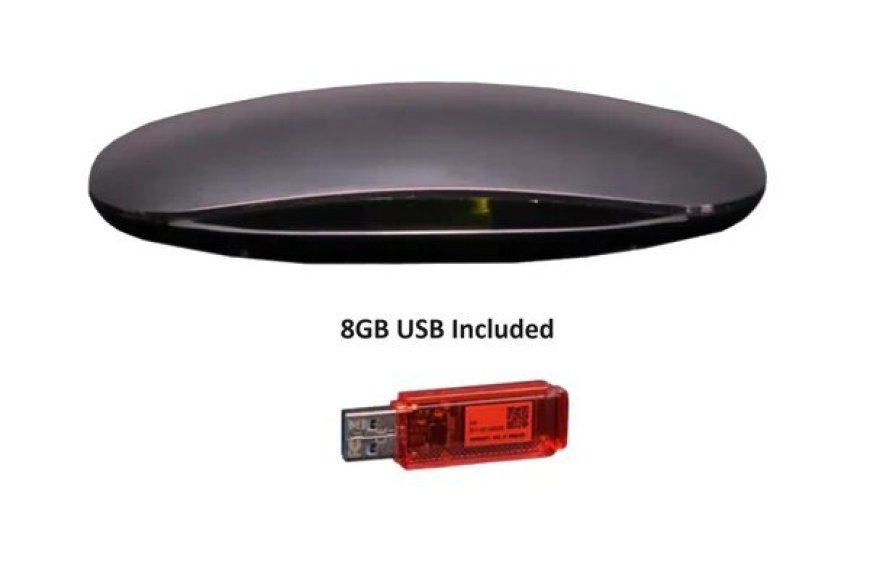In an era dominated by streaming services and on-demand content, the humble antenna TV still holds a significant place in households around the globe. A crucial innovation that has modernized this traditional form of entertainment is the Digital Video Recorder (DVR). DVRs have transformed how we consume free-to-air television, offering flexibility and control that were once the exclusive domain of cable and satellite services. This article delves into the evolution, functionality, and impact of DVRs for antenna TV, exploring why they remain a valuable asset in the contemporary entertainment landscape.
The Evolution of DVRs
The Beginnings of Time-Shifting Technology
The concept of recording television programs dates back to the era of VHS tapes, which allowed viewers to record live broadcasts and watch them at their convenience. However, these analog devices had significant limitations, including poor video quality, limited recording capacity, and the need for manual operation. The advent of digital technology paved the way for DVRs, which offered substantial improvements over their analog predecessors.
Rise of the DVR
The first DVRs emerged in the late 1990s, with TiVo and ReplayTV being among the pioneers. These devices revolutionized television viewing by introducing features such as pausing live TV, fast-forwarding through commercials, and scheduling recordings with a user-friendly interface. While initial models were designed primarily for cable and satellite TV, the growing popularity of antenna TV and the demand for free-to-air content led to the development of DVRs specifically tailored for antenna use.
Transition to Digital Broadcasting
The transition from analog to digital broadcasting in the mid-2000s marked a significant milestone for antenna TV. Digital broadcasts offered superior picture and sound quality, as well as the ability to transmit multiple channels over the same frequency. This shift necessitated the development of DVRs capable of handling digital signals, further enhancing the viewing experience for antenna TV users.
How DVRs for Antenna TV Work
Basic Components and Functionality
A DVR for antenna TV typically consists of a tuner, a hard drive, and software that manages recording and playback functions. The tuner captures the digital broadcast signal from the antenna, while the hard drive stores the recorded content. The software interface allows users to schedule recordings, manage stored content, and control playback.
Integration with Digital Antennas
Modern DVRs are designed to work seamlessly with digital antennas, which capture over-the-air (OTA) signals from local broadcasters. These signals are then converted into a format that can be recorded and stored by the DVR. Some advanced models even feature multiple tuners, allowing users to record multiple channels simultaneously or watch one channel while recording another.
User Interface and Experience
One of the most significant advancements in DVR technology is the development of intuitive user interfaces. These interfaces allow users to easily navigate through menus, search for programs, set recording schedules, and manage recorded content. Features such as electronic program guides (EPGs) provide detailed information about upcoming broadcasts, making it simple to plan recordings in advance.
Storage and Playback Options
DVRs for antenna TV come with varying storage capacities, ranging from a few hundred gigabytes to several terabytes. This storage is used to save recorded programs, which can then be played back at any time. Some DVRs also offer cloud storage options, allowing users to store their recordings online and access them from multiple devices. Playback features typically include the ability to pause, rewind, and fast-forward through recorded content, providing a level of control that enhances the viewing experience.
Benefits of DVRs for Antenna TV
Cost Savings
One of the primary benefits of using a DVR with antenna TV is cost savings. Unlike cable and satellite services, which often come with hefty monthly fees, antenna TV is free. By combining a digital antenna with a DVR, users can enjoy the benefits of recorded television without the ongoing costs associated with subscription services.
Access to Free-to-Air Content
Antenna TV provides access to a wide range of free-to-air content, including local news, sports, entertainment, and educational programs. DVRs enhance this experience by allowing users to record their favorite shows and watch them at their convenience. This is particularly useful for viewers who have busy schedules or want to avoid missing live broadcasts.
Flexibility and Convenience
DVRs offer unparalleled flexibility and convenience, transforming how viewers interact with television content. With the ability to pause live TV, rewind to catch missed moments, and fast-forward through commercials, users have greater control over their viewing experience. Additionally, the option to schedule recordings ensures that favorite programs are never missed, even if they air at inconvenient times.
Enhanced Viewing Experience
The superior picture and sound quality of digital broadcasts, combined with the advanced features of modern DVRs, result in an enhanced viewing experience. High-definition (HD) and even 4K broadcasts are now available over-the-air, and DVRs can capture this quality, ensuring that recorded content looks and sounds as good as the original broadcast.
Popular DVR Models for Antenna TV
TiVo Bolt OTA
TiVo, a name synonymous with DVR technology, offers the Bolt OTA, a model specifically designed for antenna TV. The Bolt OTA features four tuners, allowing users to record up to four channels simultaneously. It also includes a 1TB hard drive, providing ample storage for recorded content. TiVo’s renowned user interface, with features like SkipMode (to skip commercials) and OnePass (to aggregate episodes from different sources), makes the Bolt OTA a top choice for antenna TV users.
Channel Master Stream+
Channel Master’s Stream+ is another popular option for antenna TV enthusiasts. This DVR integrates with Google’s Live Channels app, offering a streamlined interface for live TV and recordings. The Stream+ supports two simultaneous recordings and includes a microSD slot for expandable storage. With its built-in Chromecast, users can also stream content from various apps directly to their TV.
Tablo Quad
The Tablo Quad is a versatile DVR that offers four tuners and supports both internal and external storage options. Unlike traditional DVRs, the Tablo Quad does not connect directly to a TV. Instead, it streams recorded content to various devices, including smart TVs, streaming boxes, and mobile devices. This flexibility makes it an excellent choice for households with multiple viewing preferences.
Amazon Fire TV Recast
Amazon’s Fire TV Recast is designed to work seamlessly with Fire TV devices and the Alexa voice assistant. The Recast comes in two models: one with two tuners and 500GB of storage, and another with four tuners and 1TB of storage. The integration with the Fire TV ecosystem allows users to manage recordings and playback using voice commands, adding a layer of convenience to the viewing experience.
Setting Up a DVR for Antenna TV
Choosing the Right Antenna
The first step in setting up a DVR for antenna TV is selecting the right antenna. Factors such as location, distance from broadcast towers, and obstructions like buildings and trees can affect signal quality. Indoor antennas are suitable for urban areas with strong signals, while outdoor antennas are recommended for rural or suburban areas with weaker signals. Amplified antennas can also help boost signal strength, ensuring a clear and stable reception.
Connecting the DVR
Once the antenna is installed, it needs to be connected to the DVR. This typically involves connecting the antenna’s coaxial cable to the DVR’s input port. Some DVRs may also require an internet connection for features like program guides, software updates, and streaming capabilities. This can be achieved through a wired Ethernet connection or Wi-Fi.
Configuring the DVR
After connecting the antenna and establishing an internet connection, the DVR needs to be configured. This process usually involves scanning for available channels, setting up recording preferences, and customizing the user interface. Many DVRs offer step-by-step setup guides to assist users through this process.
Managing Recordings
Effective management of recordings is crucial for maximizing the benefits of a DVR. Users can create recording schedules based on their viewing habits, prioritizing certain programs and adjusting settings to avoid conflicts. Many DVRs also offer the option to automatically delete old recordings to free up space for new content, ensuring that the hard drive remains uncluttered.
Challenges and Considerations
Signal Quality
While DVRs offer numerous benefits, they are dependent on the quality of the antenna signal. Factors such as weather conditions, geographic location, and interference from other electronic devices can affect signal strength and quality. Users may need to experiment with antenna placement and type to achieve optimal reception.
Storage Limitations
Although many DVRs come with substantial storage capacity, avid TV viewers may find themselves running out of space. This can be addressed by regularly managing recordings, deleting unwanted content, and considering DVRs with expandable storage options. Cloud storage is another alternative, though it may come with additional costs.
Compatibility Issues
Not all DVRs are compatible with every type of antenna or TV. It’s essential to ensure that the DVR you choose works with your existing setup. Additionally, some features, such as integration with streaming services or smart home devices, may require specific models or additional equipment.
Cost of DVRs
While DVRs for antenna TV are generally more cost-effective than cable or satellite subscriptions, there is an upfront cost associated with purchasing the device. High-end models with advanced features can be relatively expensive. However, the long-term savings on subscription fees often justify the initial investment.
Future of DVRs for Antenna TV
Integration with Streaming Services
The future of DVRs for antenna TV is likely to see increased integration with streaming services. As consumers continue to shift towards on-demand content, DVR manufacturers are exploring ways to combine live TV recording with access to popular streaming platforms. This hybrid approach offers the best of both worlds, allowing users to enjoy free-to-air broadcasts alongside a vast library of online content.
Enhanced User Interfaces
Advancements in artificial intelligence and machine learning are set to enhance the user interfaces of DVRs. Personalized recommendations, voice control, and advanced search capabilities will make it easier for users to discover and manage
















![Noots Focus Reviews [Truth Exposed 2025]!](https://news.bangboxonline.com/uploads/images/202501/image_430x256_678e3b94881a1.jpg)
![Vivalis Male Enhancement: The Must-Know Ingredients [2025 Update]](https://news.bangboxonline.com/uploads/images/202501/image_430x256_678e3b54e396c.jpg)













